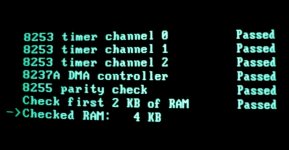modem7
10k Member
Many years ago, at work, an application test failure was discovered to be caused by a block of code that somehow went missing 'on my watch'. I claimed to my fellow workers that whilst I was getting a coffee, a fly must have landed on the Delete key. (I wasn't prepared to try the 'damn static electricity' excuse yet again.)- a cat: during the debug session I was called by my wife. When coming back I noticed one of the cats standing on my desk. I compiled my file (I just finished editing), put the EEPROM in the socket, started the PC and it stopped before reaching the keyboard test. ????? OK, just undo the last changes and try again. That's how I noticed that the cat had managed in some way to delete whole lines of the program. Untrusty creatures, just out to sabotage your work behind your back

